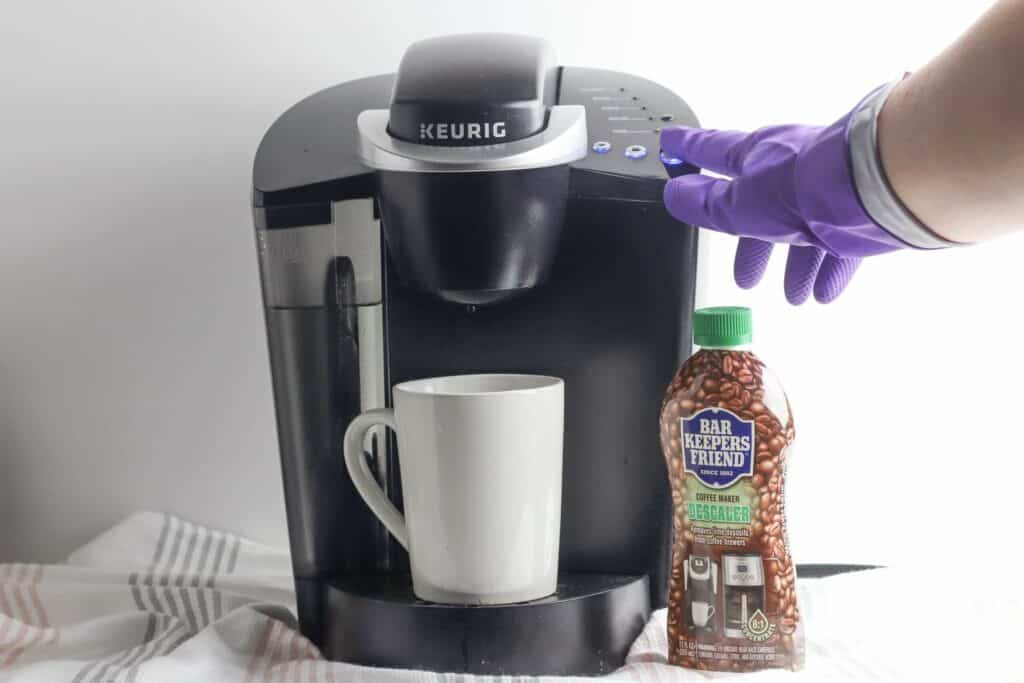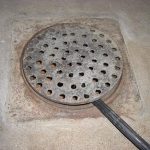If you’re like me, you rely on your Keurig coffee maker to get you through the day. But have you ever noticed that your coffee starts to taste a little off after a while? That’s because your Keurig needs to be cleaned regularly to keep it in top shape.
The problem is, many cleaning methods involve using vinegar, which can leave a strong odor and taste behind. But don’t worry, there are other ways to clean your Keurig without vinegar.
One of the most effective ways to clean your Keurig without vinegar is by using citric acid or lemon juice. Both of these natural agents are great at removing grease and dirt, and they won’t leave any residue or strong odor behind.
Another option is to use baking powder and water, which has similar oxidization properties to vinegar and can help battle bacteria and mold.
So if you’re looking for a way to clean your Keurig without vinegar, you’re in luck. In this article, I’ll share some of the best methods for cleaning your Keurig using natural ingredients that won’t leave any residue or strong odor behind. Whether you prefer citric acid, lemon juice, or baking powder, I’ve got you covered. So let’s get started!
Why Avoid Vinegar?
As a coffee lover, I know how important it is to keep my Keurig coffee maker clean. I have heard that vinegar is a popular cleaning solution, but I prefer to avoid it. Here are a few reasons why:
Vinegar and Keurig Coffee Makers
While vinegar is an effective cleaning solution, it can be harsh on Keurig coffee makers. The acidity of vinegar can cause damage to the internal parts of the machine over time. Vinegar can also leave a strong smell that lingers even after rinsing the machine several times.
Additionally, Keurig coffee makers have water tanks and internal tubing that can be difficult to clean thoroughly. The acidity of vinegar may not be enough to remove all the buildup and bacteria that can accumulate in these areas. This can lead to a less-than-perfect cup of coffee and potential health risks.
Alternative Cleaning Solutions
Instead of vinegar, I prefer to use a mixture of water and dish soap to clean my Keurig coffee maker. This solution is gentle enough to use on a regular basis and can remove most of the buildup and bacteria that can accumulate in the machine. I also descale my Keurig regularly using a descaling solution to remove any mineral buildup.
Another alternative to vinegar is citric acid or lemon juice. These solutions are less harsh than vinegar and can be just as effective in removing buildup and bacteria. Simply mix the citric acid or lemon juice with water and run it through the machine as you would with vinegar.
Overall, while vinegar is a popular cleaning solution, it may not be the best choice for Keurig coffee makers. There are alternative cleaning solutions that are just as effective and gentler on the machine. By using these solutions regularly, you can ensure that your Keurig coffee maker stays clean and your coffee tastes great.
Cleaning Coffee Maker Solutions
If you don’t have vinegar on hand or simply prefer not to use it, there are several alternative cleaning solutions you can try to keep your Keurig coffee maker in tip-top shape.
Using Lemon Juice
Lemon juice is a great natural alternative to vinegar for cleaning your Keurig. Simply mix equal parts lemon juice and water and pour the mixture into the water reservoir. Run the machine through a few cycles until the reservoir is empty, then refill it with fresh water and run several more cycles to rinse out any remaining residue.
Using Baking Soda
Baking soda is another effective cleaning solution for your Keurig. Mix 1 tablespoon of baking soda with 2 cups of warm water and pour the mixture into the water reservoir. Run the machine through a few cycles, then rinse thoroughly with fresh water.
You can also use baking soda to clean the exterior of your Keurig. Make a paste with baking soda and water, then use a soft cloth to gently scrub the surface of the machine. Rinse with a damp cloth and dry with a clean towel.
Using Citric Acid
Citric acid is a powerful cleaning agent that can help remove mineral buildup in your Keurig. Mix 1 tablespoon of citric acid with 2 cups of warm water and pour the mixture into the water reservoir. Run the machine through a few cycles, then rinse thoroughly with fresh water.
It’s important to note that citric acid should not be used on aluminum or painted surfaces, so be sure to check your Keurig’s manual before using this cleaning solution.
Whichever alternative cleaning solution you choose, it’s important to follow the manufacturer’s instructions and rinse the machine thoroughly with fresh water to avoid any residual taste or odor.
Easy Tips for Cleaning Keurig Coffee Maker Without Vinegar
Preparing the Coffee Maker
Before cleaning your Keurig coffee maker, make sure to unplug it from the power source. Remove any remaining water from the reservoir and empty the coffee pod holder. Detach any removable parts, including the water reservoir, drip tray, and K-cup holder.
Cleaning the Exterior
Use a damp cloth to wipe down the exterior of the coffee maker. Pay special attention to any areas that may have accumulated dirt or grime, such as the handle and the top of the brewer. Avoid using any abrasive cleaners or scrubbers that may damage the surface of the coffee maker.
Cleaning the Interior
Fill the water reservoir with warm water and add a few drops of dish soap. Place a large mug or container on the drip tray to catch the cleaning solution. Run a cleansing brew cycle without a coffee pod. Repeat the process until the water reservoir is empty.
Once you have completed the cleansing brew cycle, rinse the water reservoir and all removable parts with warm water. Dry each part thoroughly before reassembling the coffee maker.
In addition to cleaning your Keurig coffee maker, it’s important to regularly descale it to remove any mineral buildup. Descaling can be done without vinegar by using a commercial descaling solution, such as Keurig’s Descaling Solution or a citric acid solution. Cleaning your Keurig coffee maker without vinegar is quick and easy with just a few simple steps.
By regularly cleaning and descaling your coffee maker, you can ensure that it continues to brew delicious coffee for years to come.
How to Maintenance?
Keeping your Keurig coffee maker clean is important to ensure that it continues to function properly and produce great-tasting coffee. Here are some maintenance tips to help you keep your Keurig in top shape:
Regular Cleaning Schedule
I make sure to clean my Keurig coffee maker regularly to prevent any buildup of coffee grinds, oils, or mineral deposits that can clog the machine and affect the taste of my coffee. I clean the exterior of the machine with a damp cloth and a mild detergent. For the internal parts, I follow the manufacturer’s instructions for cleaning and descaling. I make sure to use only Keurig-approved cleaning solutions to avoid damaging the machine.
One way to keep your Keurig clean is to run a water-only cycle after each use. This helps to flush out any remaining coffee grinds or oils from the machine. You can also use a paper clip or a needle to clear any clogs in the needle that punctures the K-cup. I do this regularly to make sure that the machine is working properly and to prevent any buildup of coffee grinds or mineral deposits.
Avoiding Mineral Buildup
Mineral buildup can affect the performance of your Keurig coffee maker and the taste of your coffee. To avoid mineral buildup, I make sure to use only filtered or bottled water in my Keurig. This helps to prevent the buildup of minerals that can clog the machine and affect the taste of my coffee. I also descale my machine regularly using Keurig-approved descaling solutions to remove any mineral buildup that may have occurred.
Another way to prevent mineral buildup is to remove the water reservoir from the machine and empty it after each use. This helps to prevent any remaining water from evaporating and leaving behind mineral deposits. I also make sure to wipe down the water reservoir and other parts of the machine with a clean, damp cloth after each use to prevent any buildup of minerals or coffee grinds.




